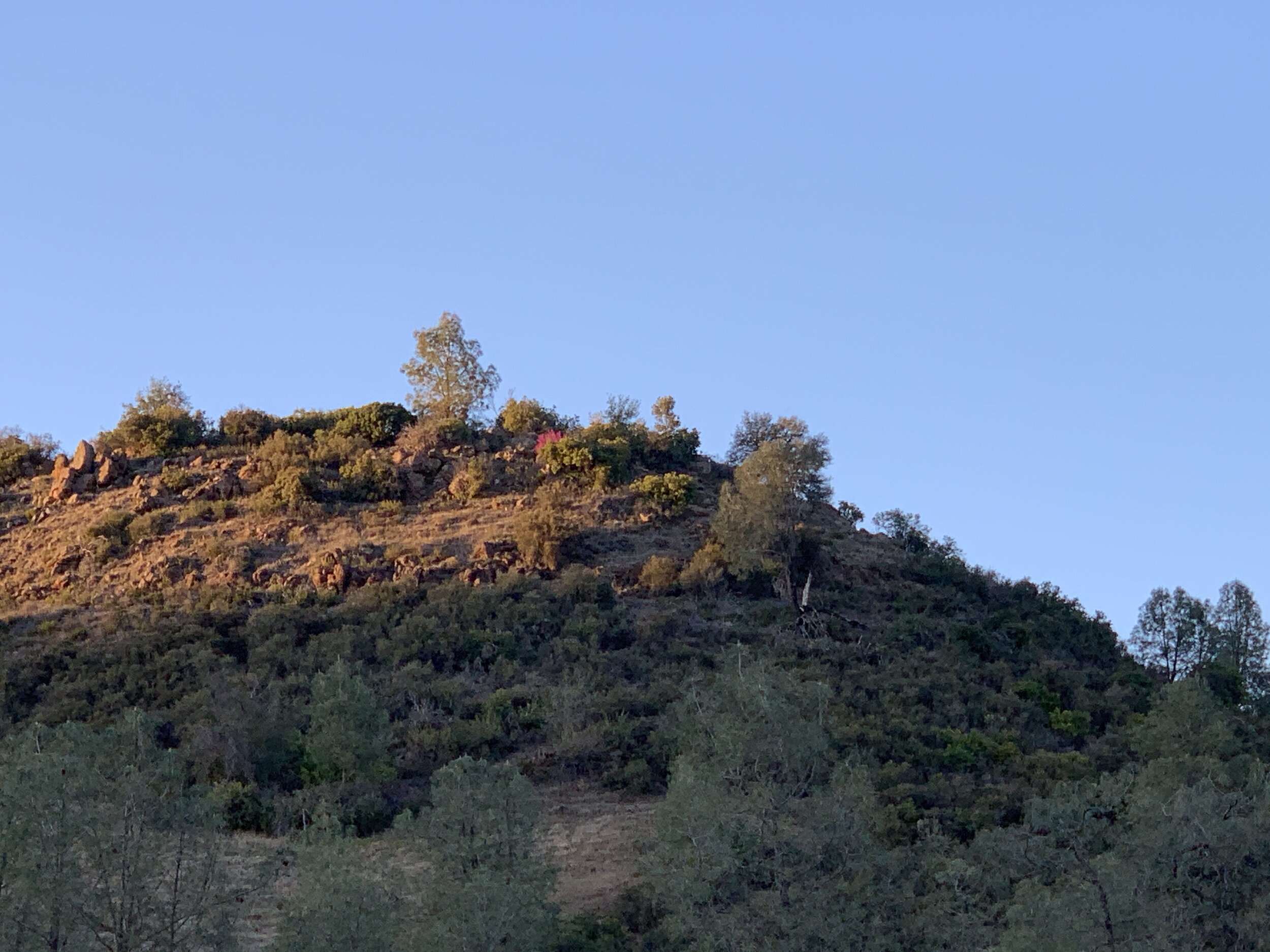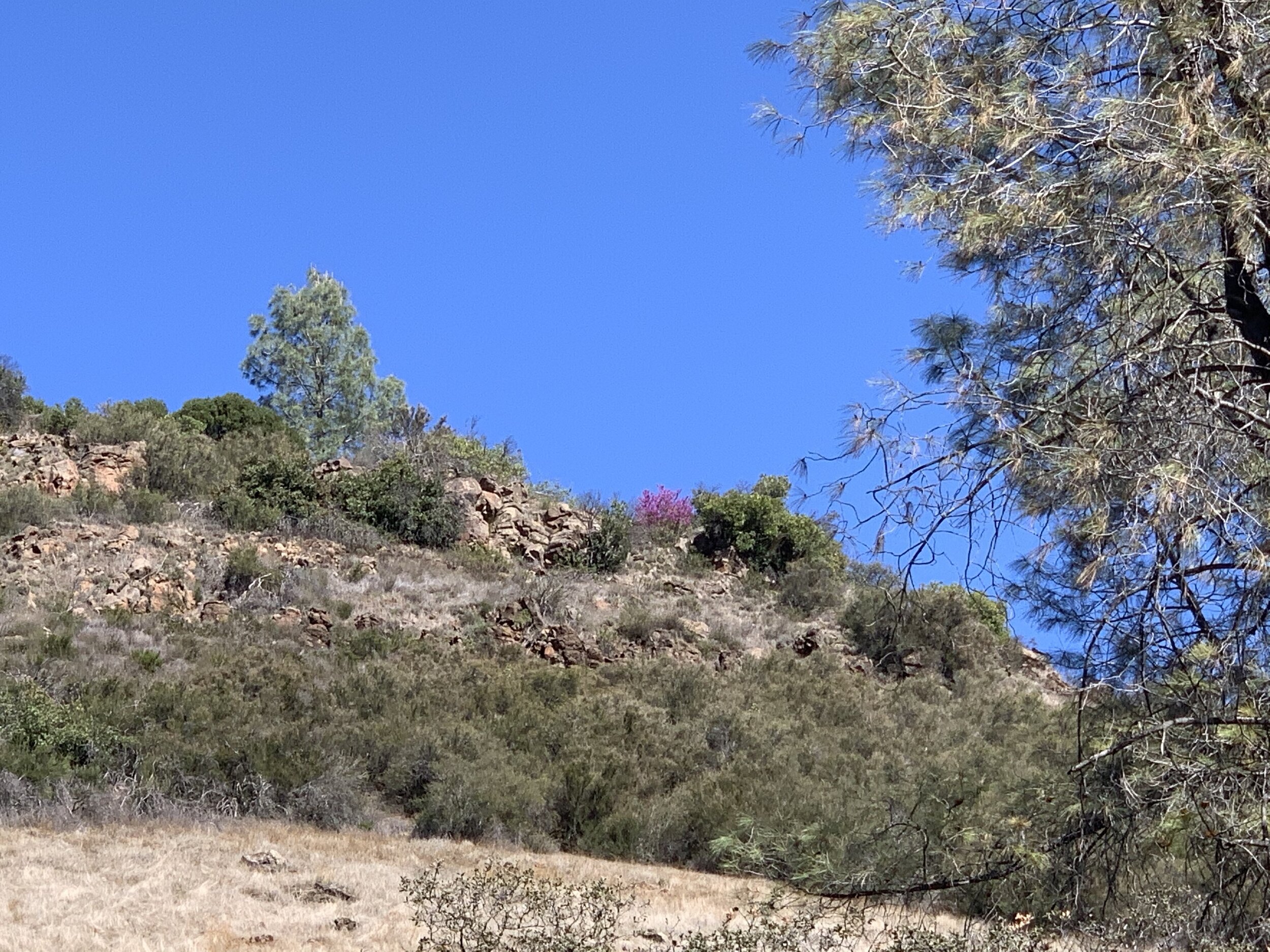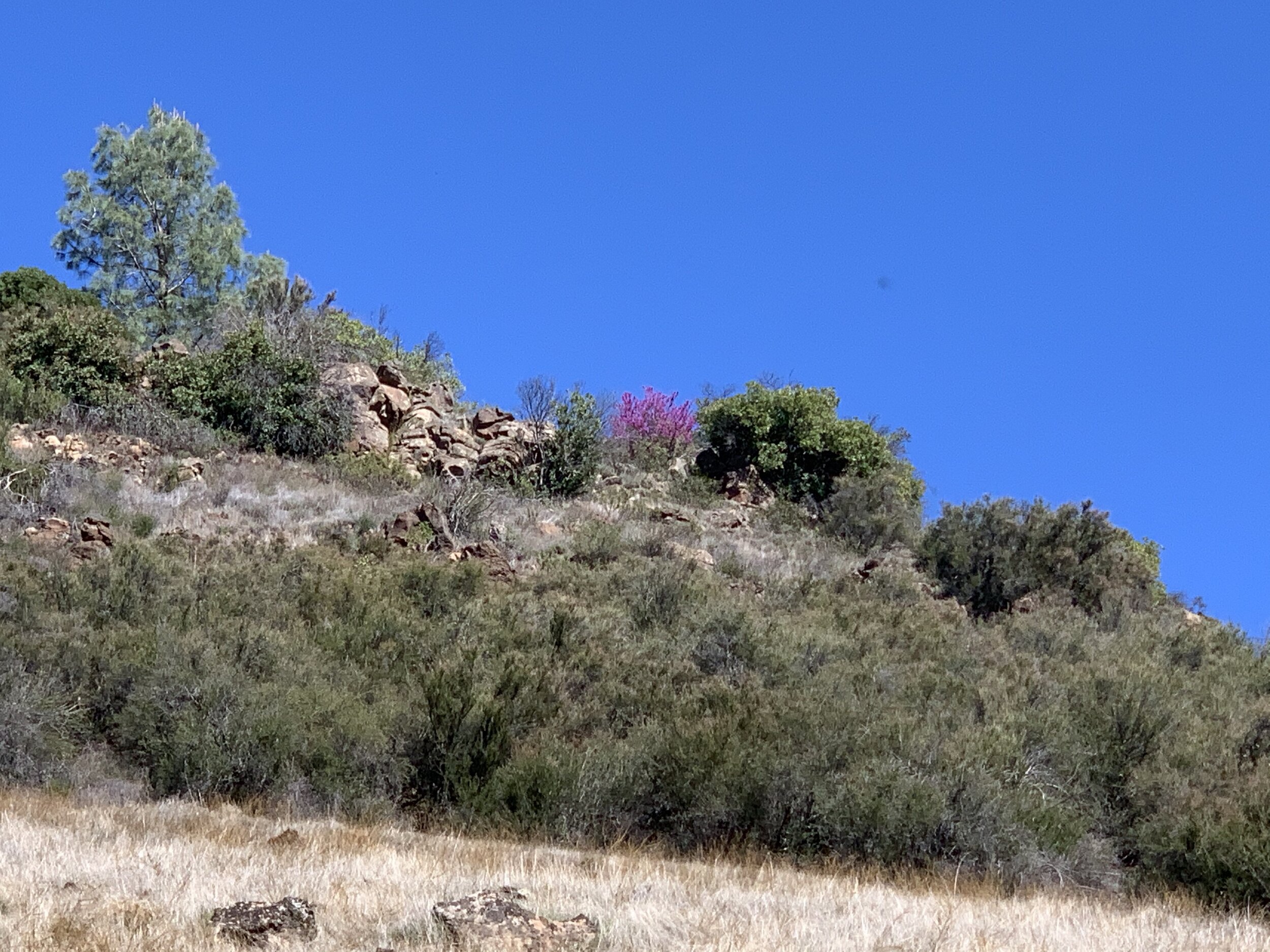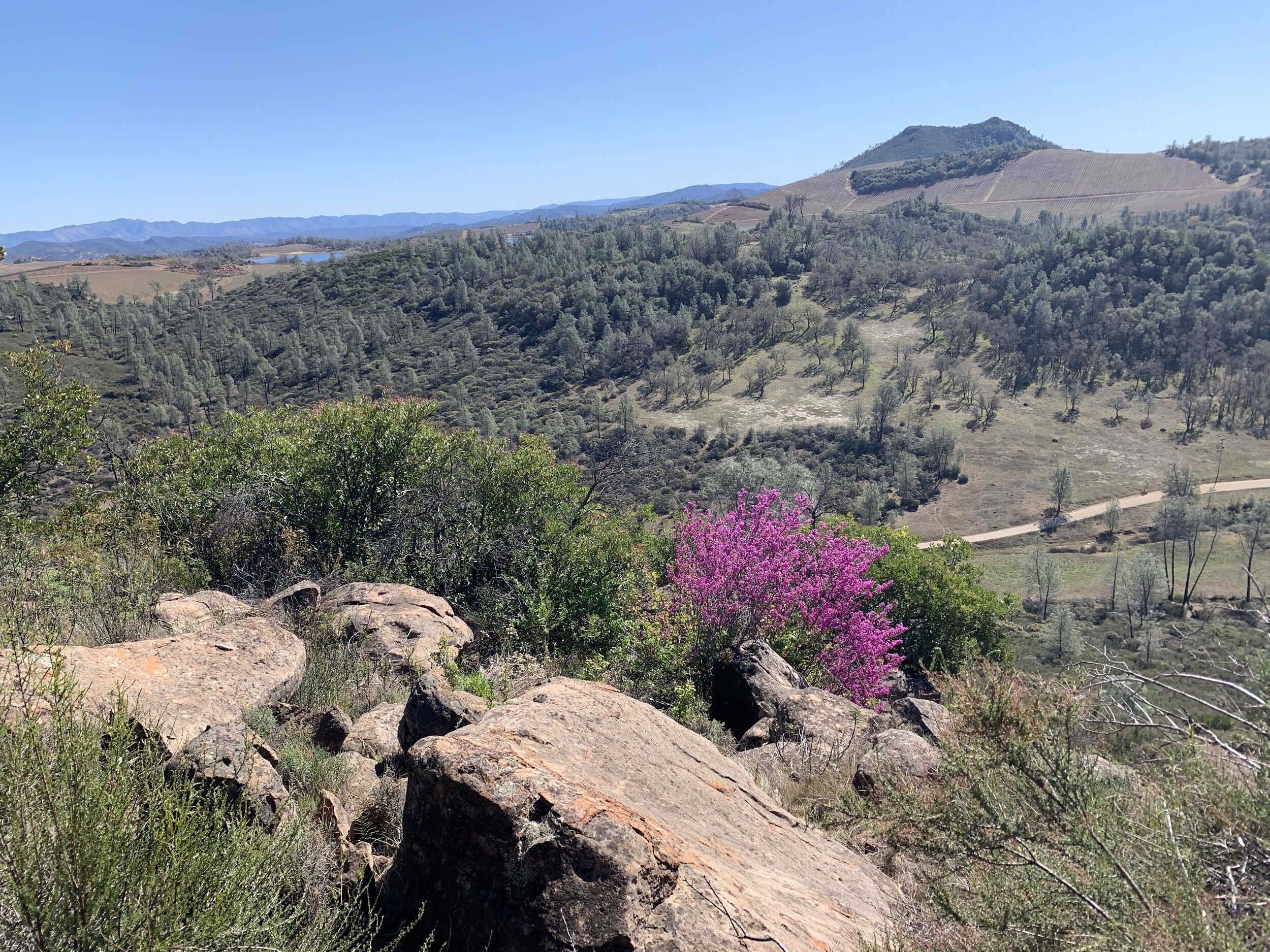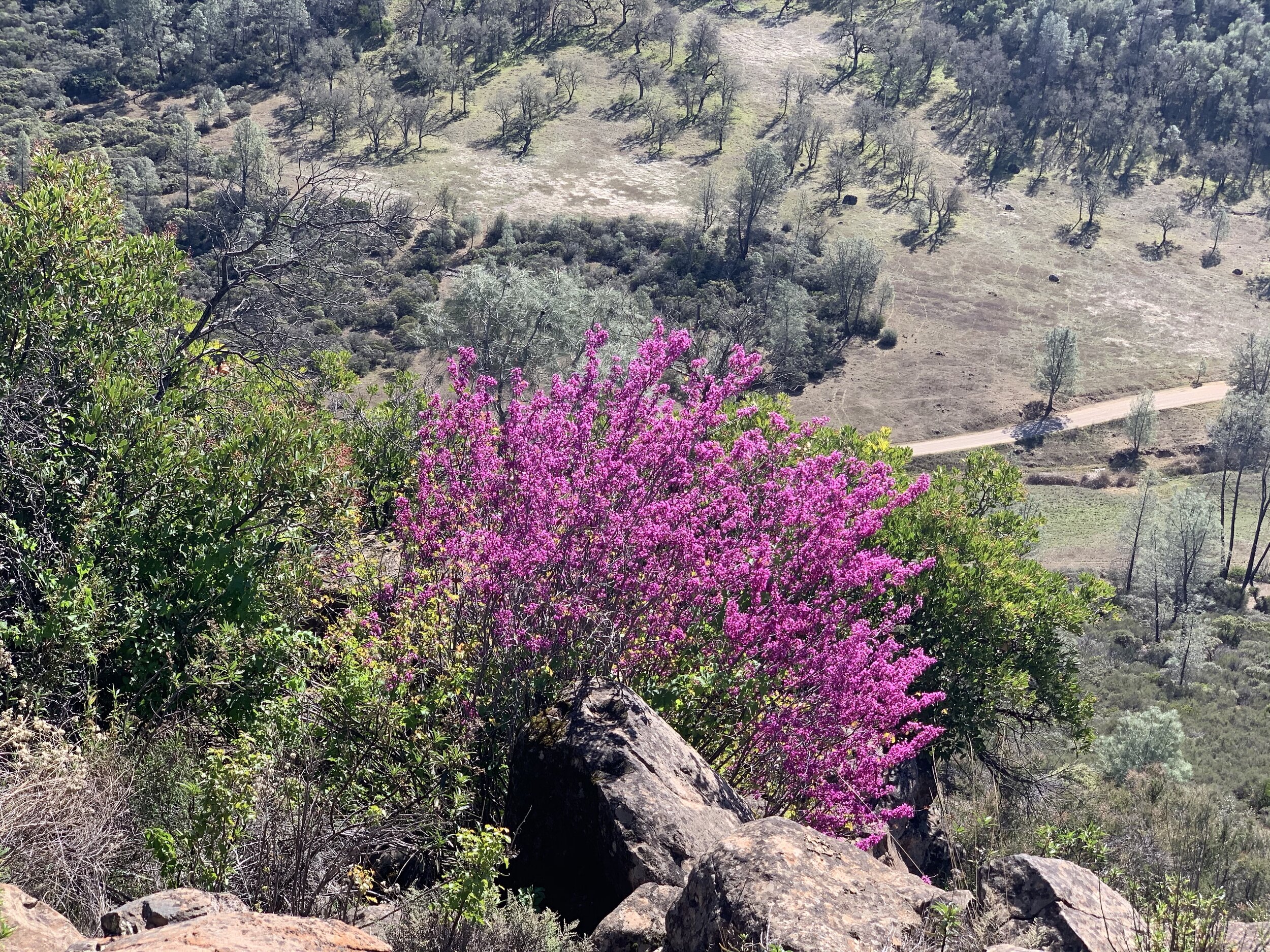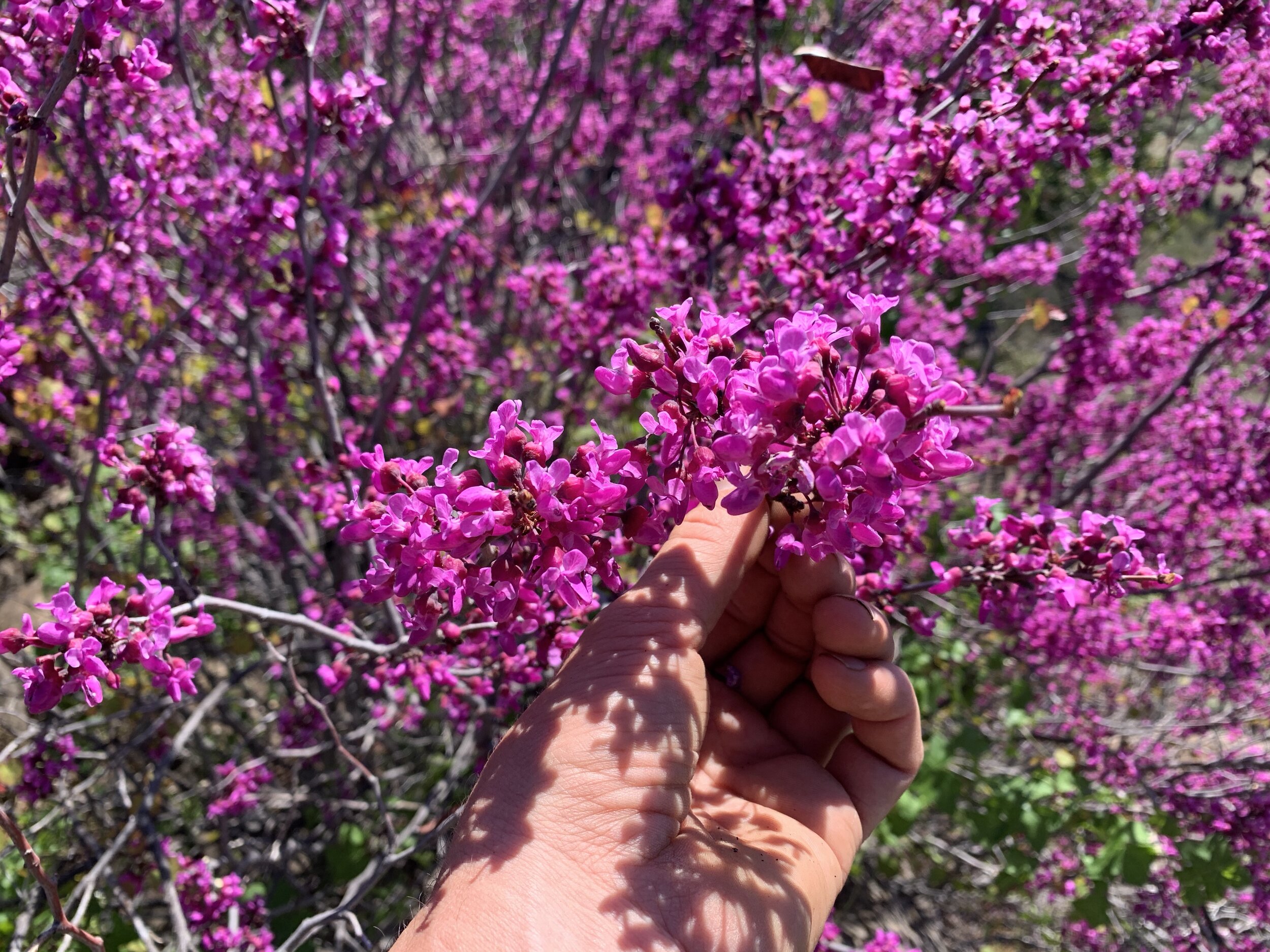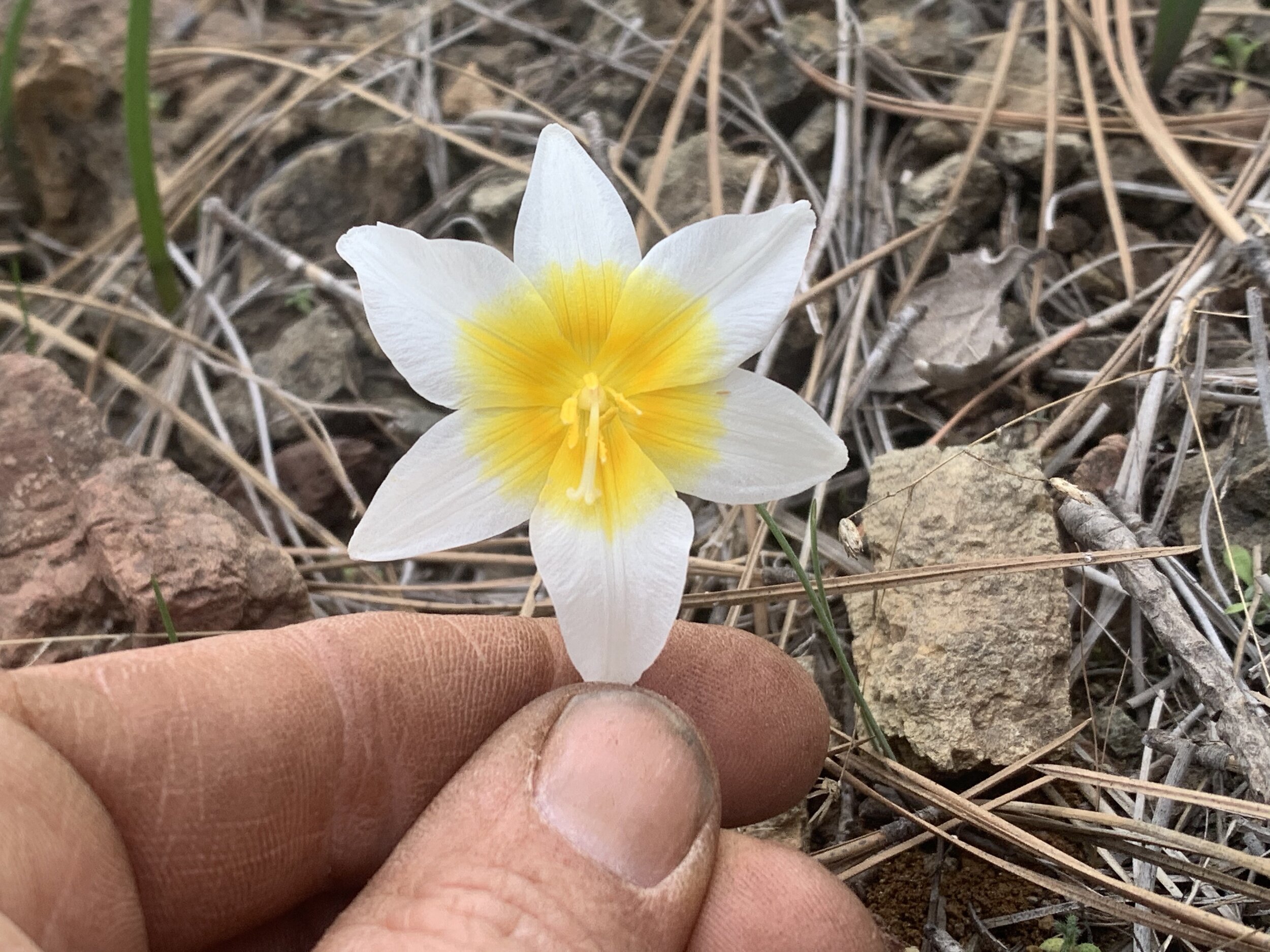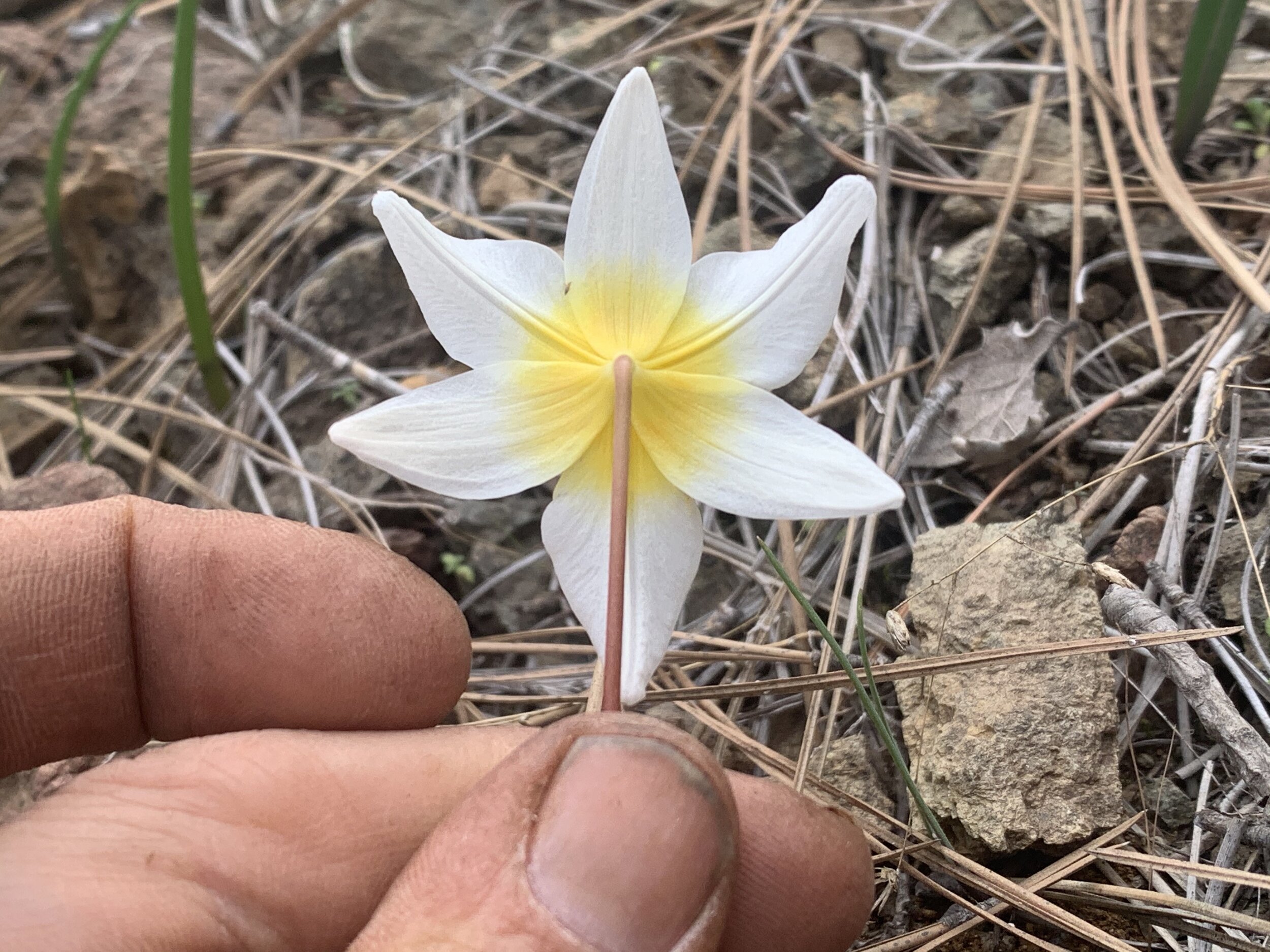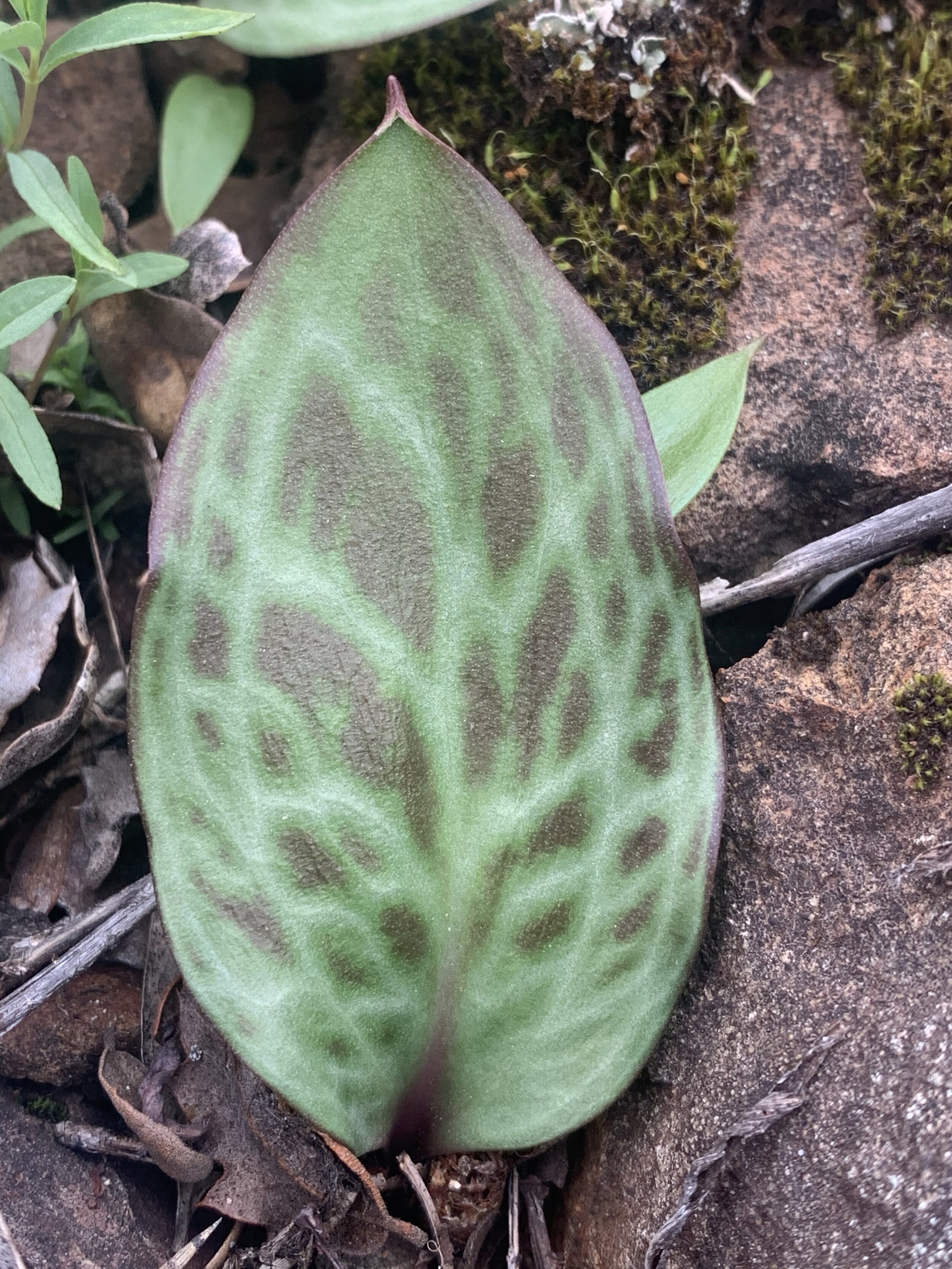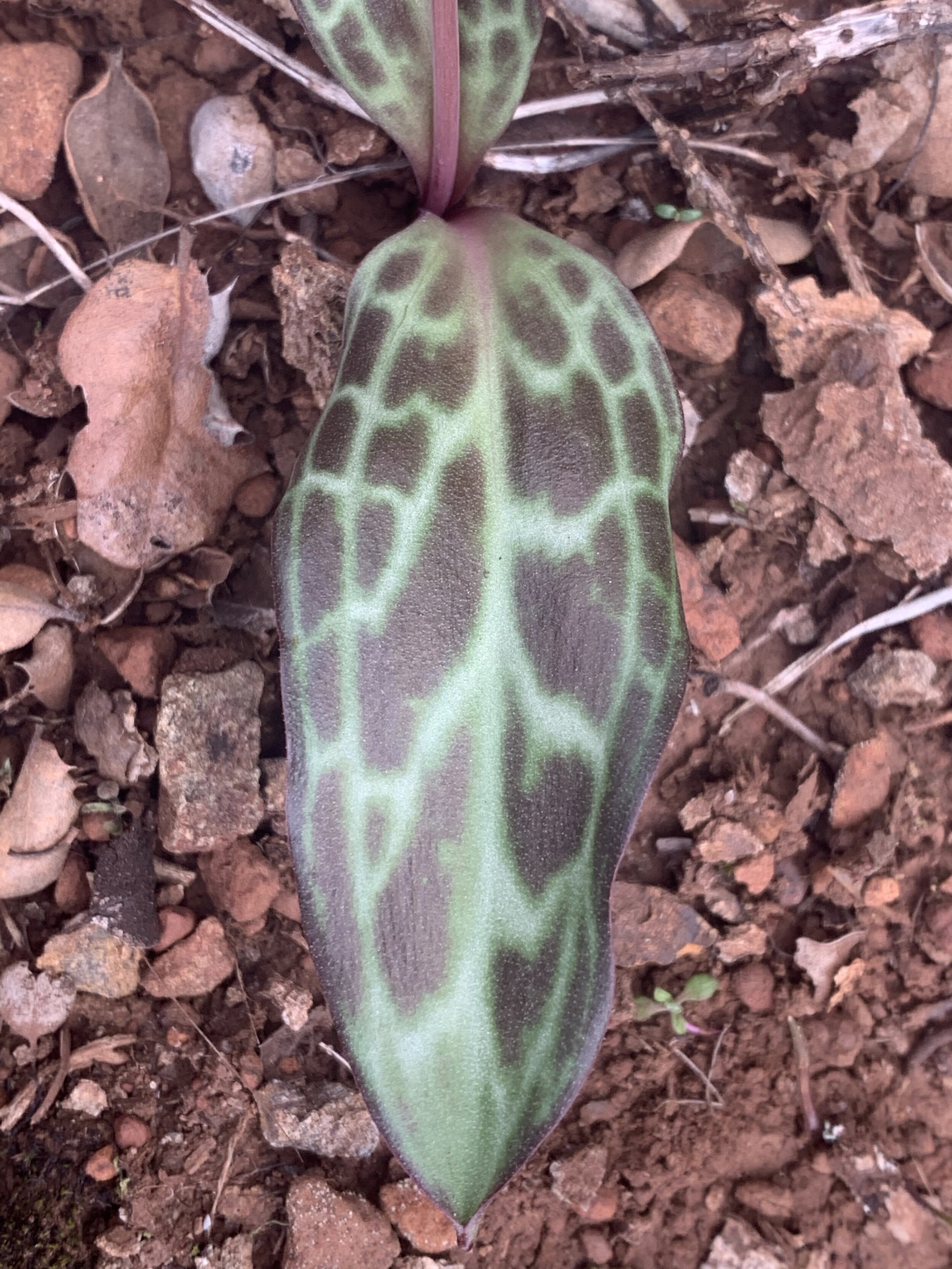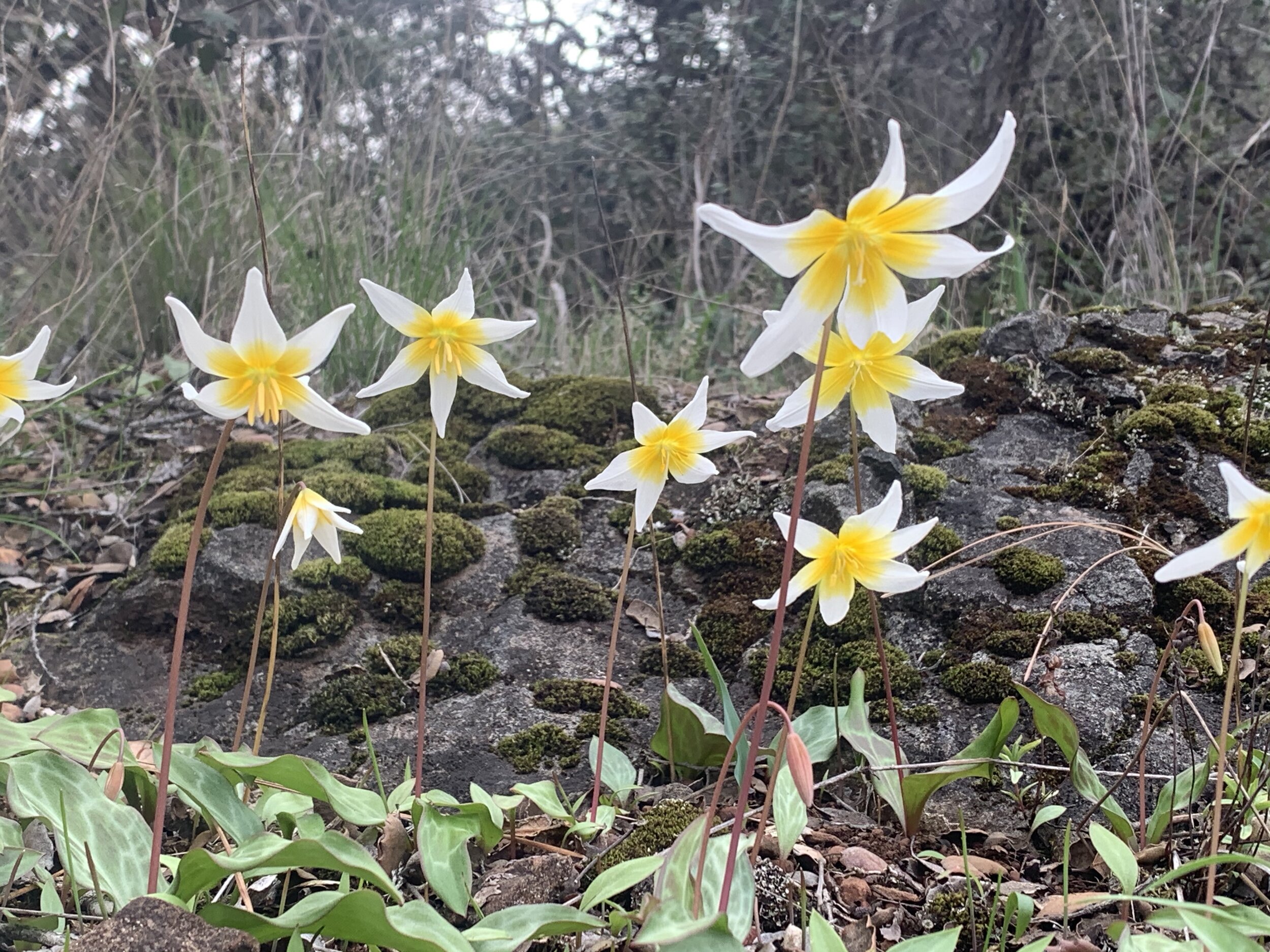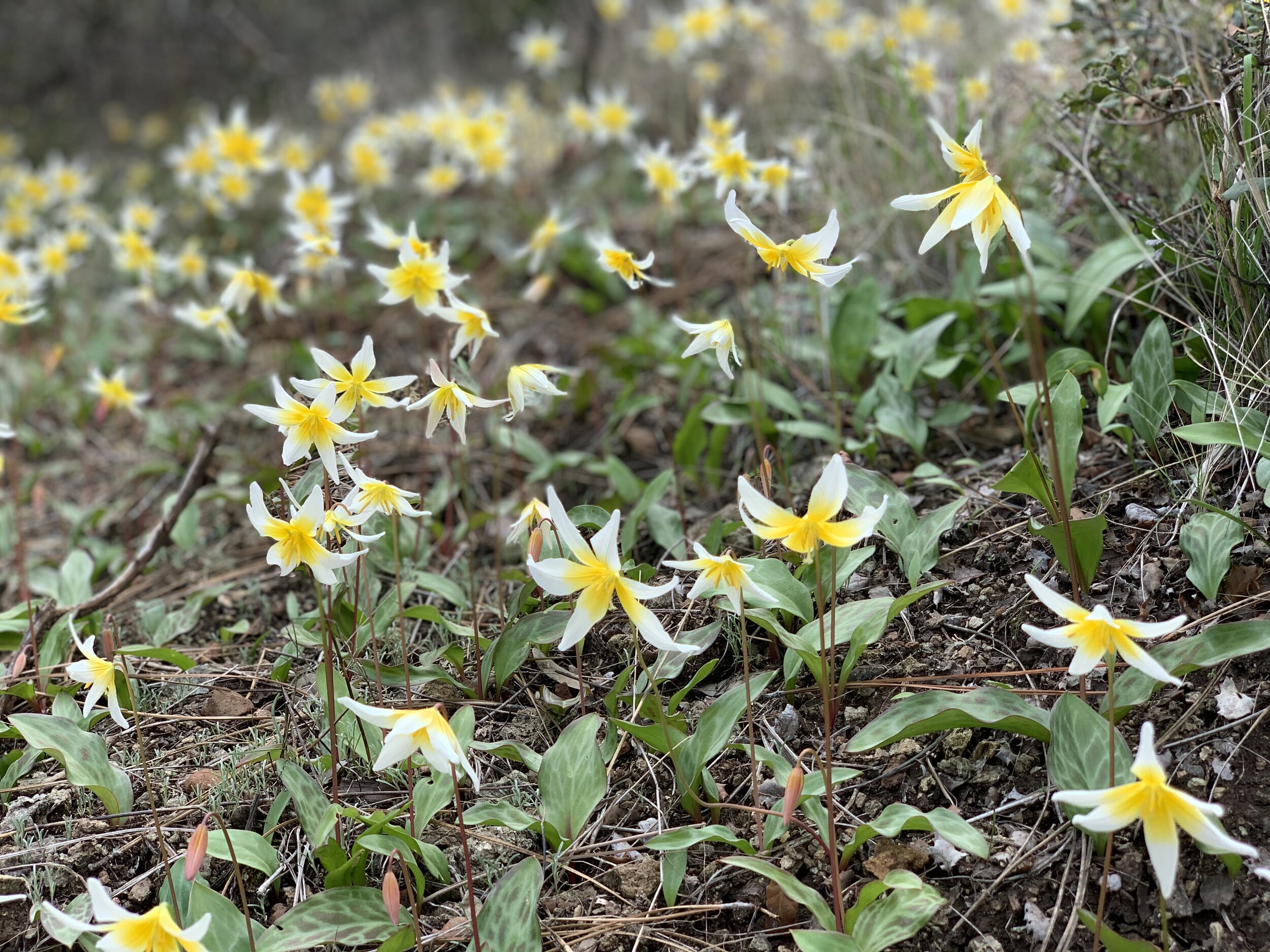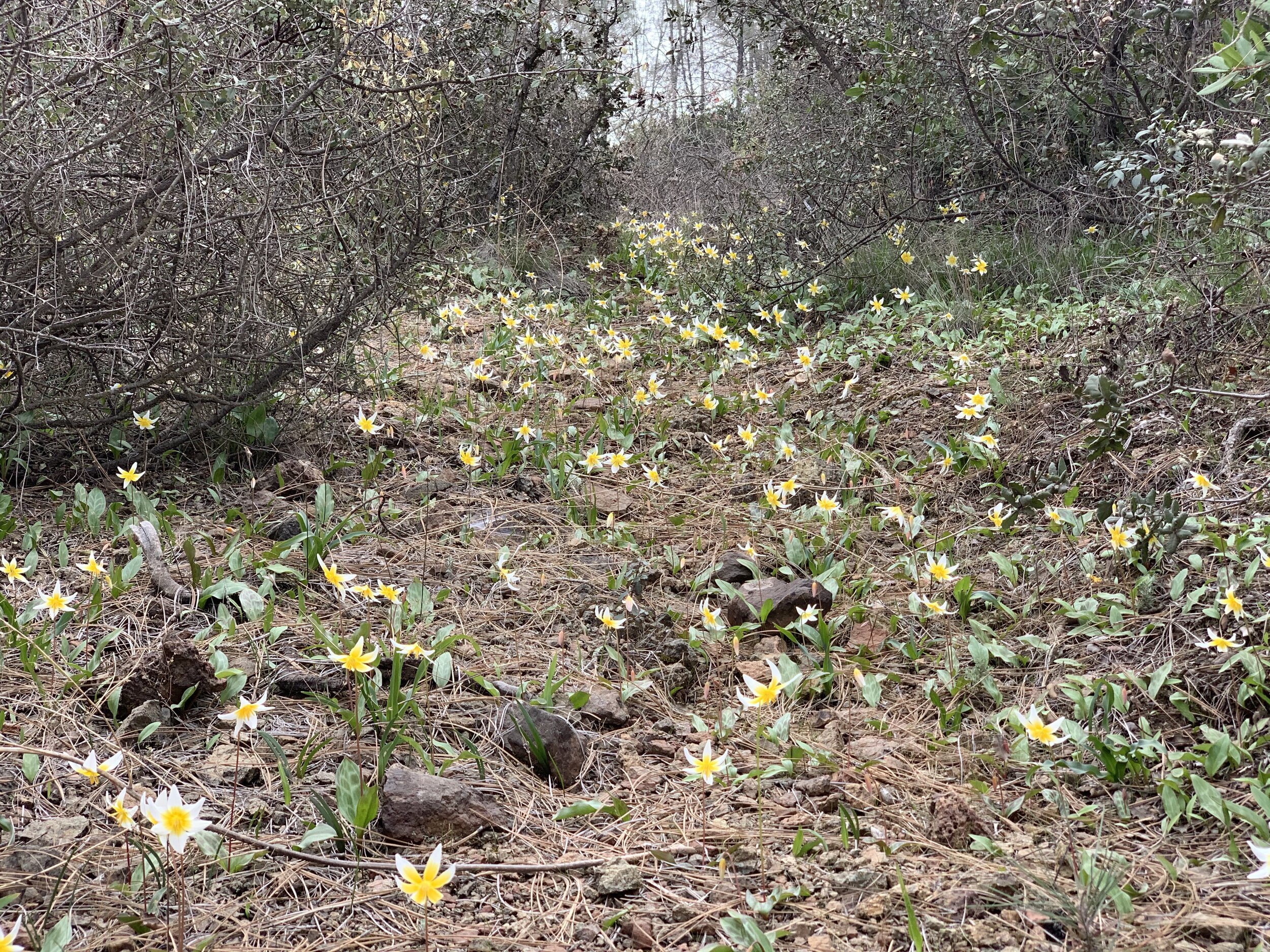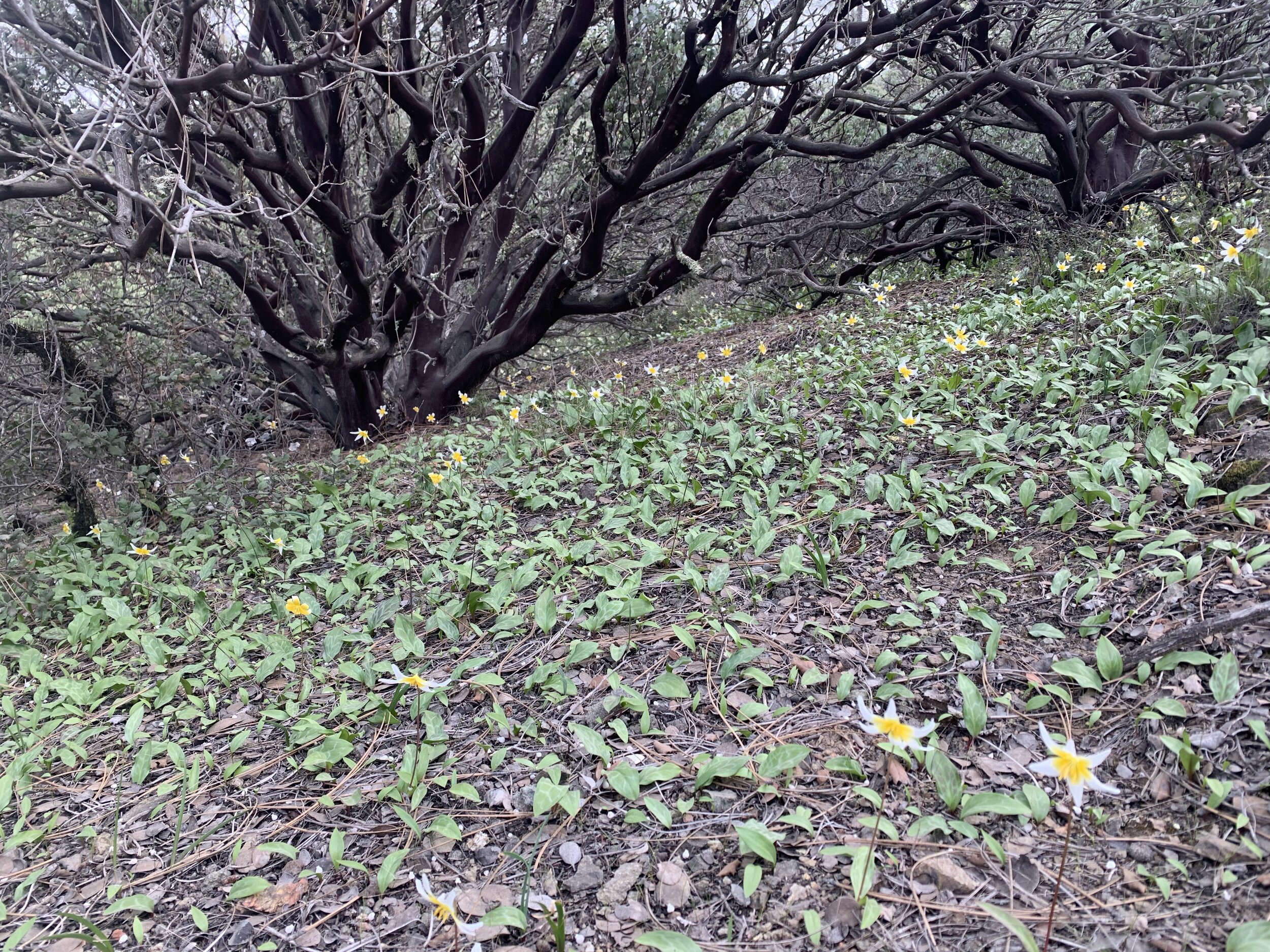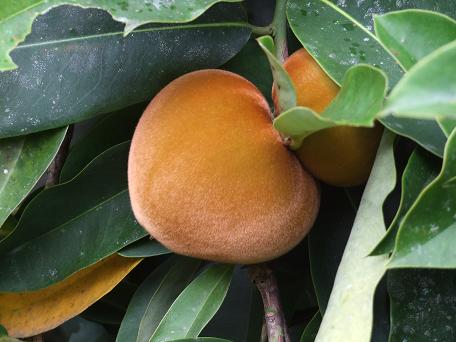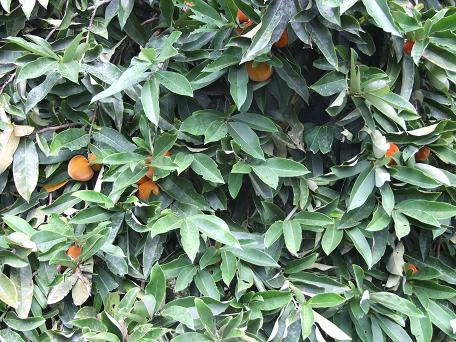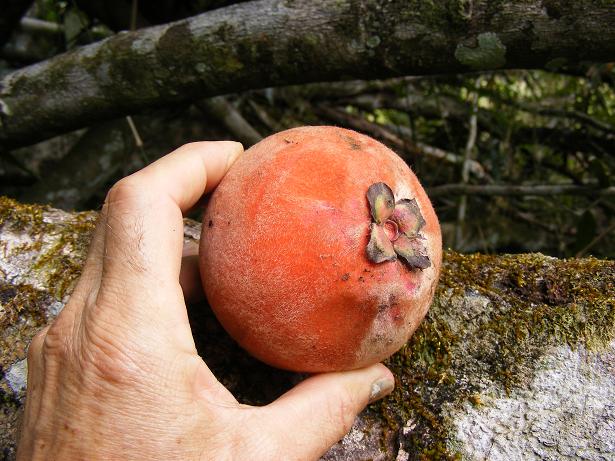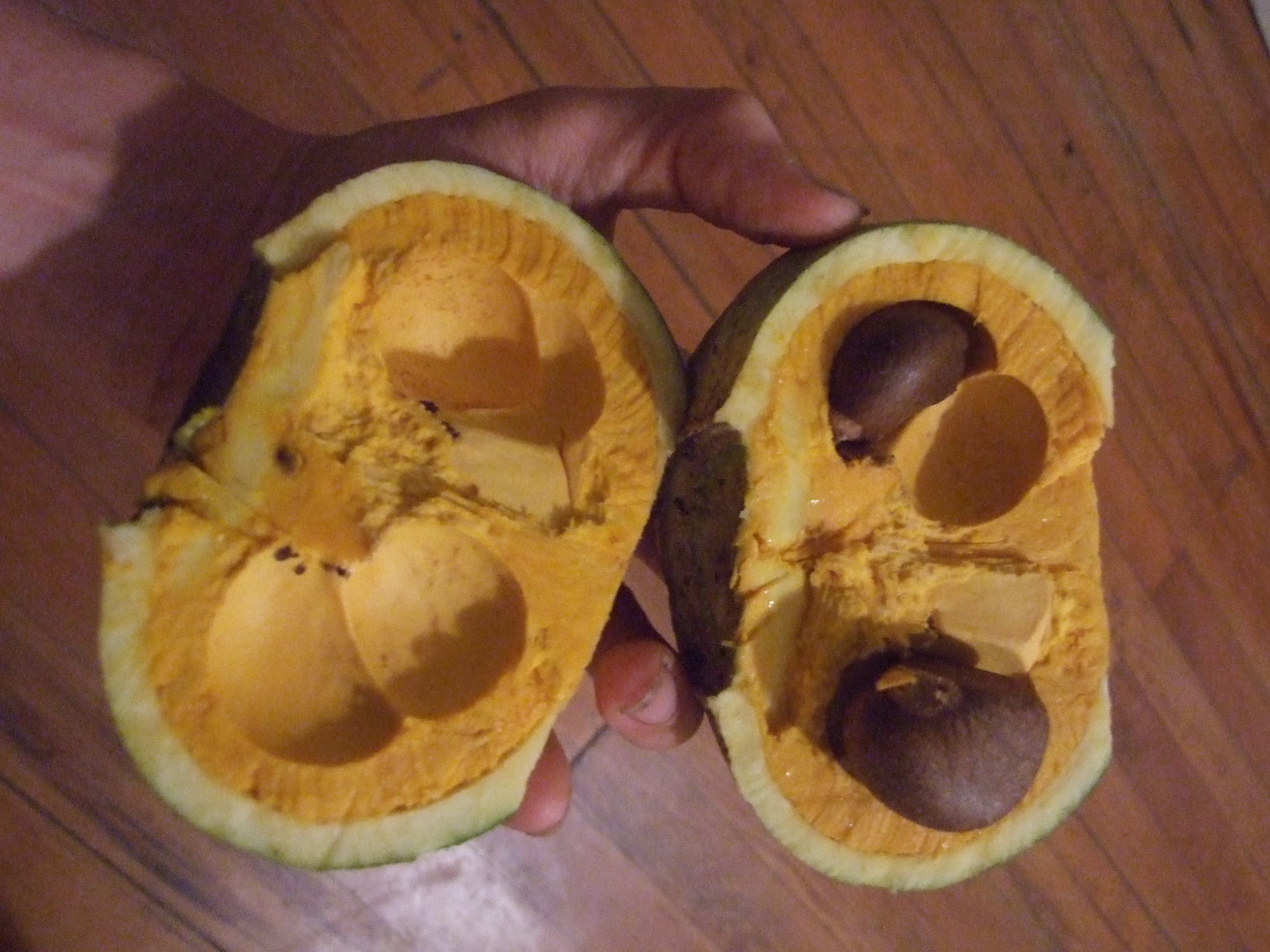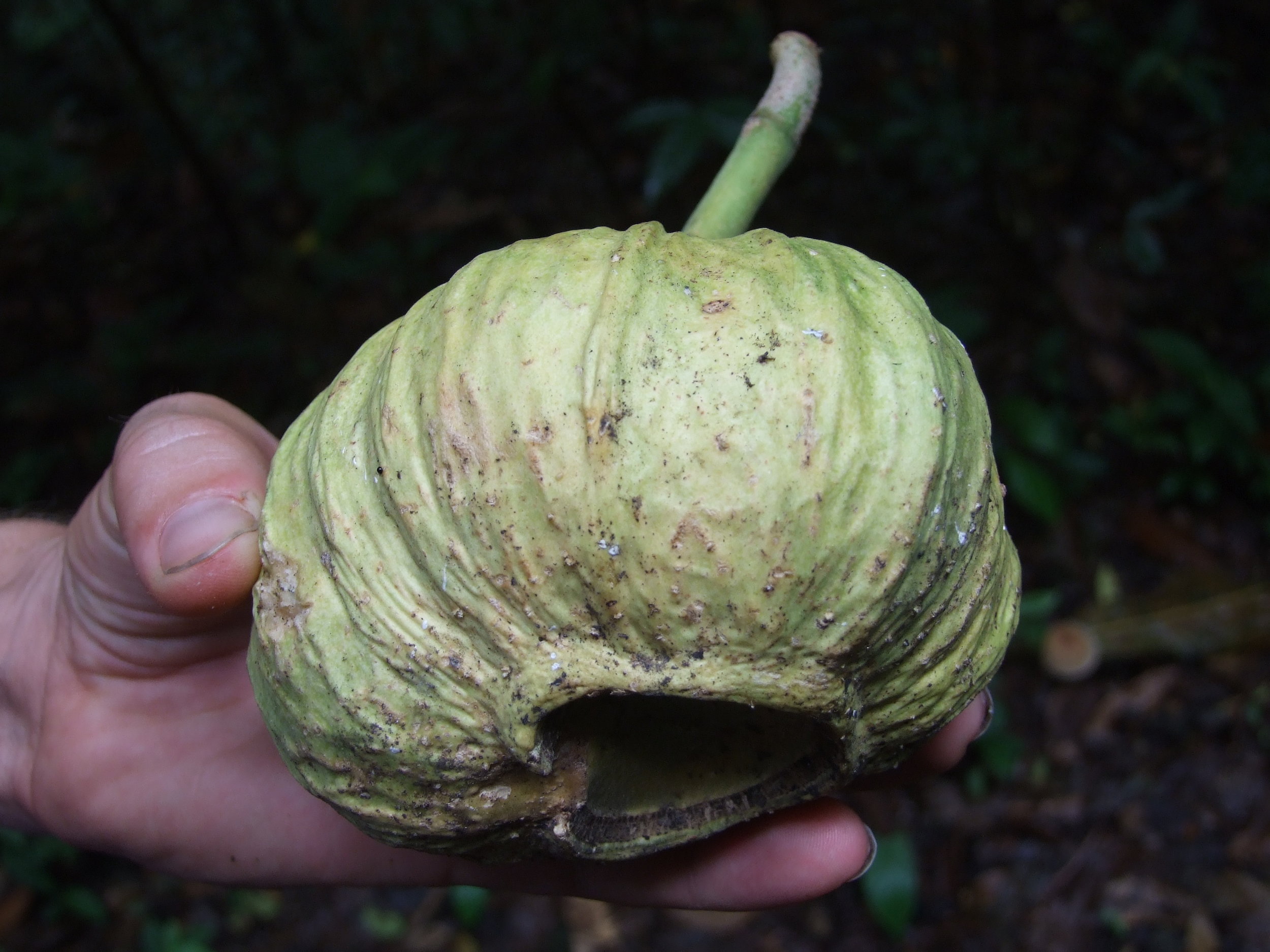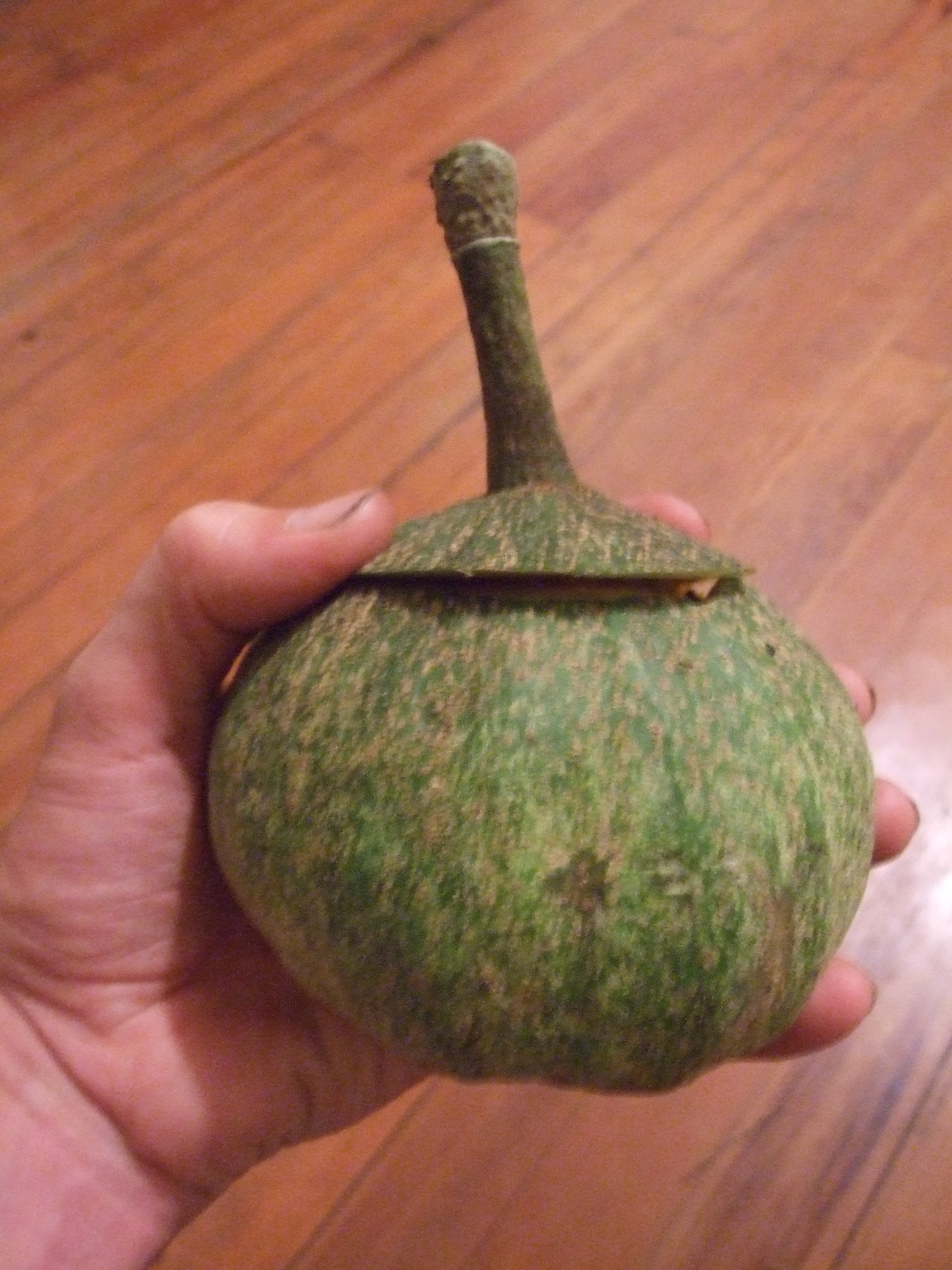Red bud blooming in end of February / early March of this year. Seeing the shock of pink from a distance I hiked up to check this one out. A truly spectacular spring blooming native shrub. The blooming plant is covered in numerous kinds of bees and insects.
Erythronium oregonum - California Fawn Lily
Erythronium californium is a herbaceous perennial bulb native to Northern California. I took these photos in Lake County where the highly scented flowers appear in full bloom at the end of February through March. numbering in the many thousands.
The bulbs, along with many other regional species, were an important food source for indigenous peoples. The bulb populations we see today are remnants of previously managed and far more extensive traditional food and land management systems.
The area depicted in these photos consists of semi-dense chaparral consisting primarily of Manzanita, Heteromeles, and Quercus (duration) along with Umbellaria californica, CThe Erythronium appears in profusion, as shown below, in the understory. The bulb seems to co-exist along side a healthy gopher population, which, reportedly, can aid in the dissemination of bulblets .
Other important genera of edible neophytes widely consumed in pre-contact California include Allium, Brodiaea, Camassia, Chlorogalum, Calochortus, Dichelostemma, Lilium, Lomatium, Perideridia, Sanicula, and Triteleia.
Aesculus California (Ca Buckeye) late winter bud
California Buckeye are one of the first deciduous trees to leaf out in late winter / early spring. This is a photo of a swollen bud, close to flushing out.
A plant from Chile kills and eats sheep...
Puya chilensis, a temperate climate evergreen perennial and close relative to the comparatively tame pineapple, catches, kills and feeds off of relatively large mammals, including sheep.
P. chilensis doesn’t consume and digest plants by way of conventional carnivorous plant methods, but nonetheless, it will snag and trap a sheep in its masses of thorns, holding the animal until it dies of starvation, and then it will proceed to feed off nutrients supplied by the decomposing carcass.
The young leaf shoots of P. chilensis can be eaten by people. Baskets and such are made from strong fibers obtained from the leaves and stems of the plant.
Here is a short recent article on Puya chilensis, apparently a 10ft specimen has just bloomed for the first time at RHS Garden Wisely, in England. Cara Smith, a Horticulturist at Wisley had this to say about the rare occurrence: “I’m really pleased that we’ve finally coaxed our Puya chilensis into flower. We keep it well fed with liquid fertilizer as feeding it on its natural diet might prove a bit problematic. It’s growing in the arid section of our glasshouse with its deadly spines well out of reach of both children and sheep alike.”
So, needless to say, Puya chilensis is a great contender for privacy screening / security planting along boarders shared with pesky neighbors.
Here are some photo I have posted previously of a very close relative to Puya chilensis, Puya berteroniana, spectacular in its own regard for its massive aquamarine/blue and orange flower spikes.
Thermopsis macrophylla - False Lupine
A west coast native annual nitrogen fixing plant in the Fabaceae family. Reminds me of Crotolaria in its growth habit and overall appearance. It looks like it has potential as a cultivated, drought tolerant biomass or cover corp species.
Thermopsis macrophylla leaf and flower.
Thermopsis macrophylla flower spike.
Ebenaceae, Diospyros blancoi, velvet apple, mabolo
Mabolo, or velvet apple is an attractive tree, closely related to the persimmon and ebony.
As the English common name would suggest, the fruit is covered in a fine, velvety skin, usually reddish brown. Inside is a soft, creamy flesh with a unique taste and aroma. The species is native to the Philippines where the tree is referred to as kamagong. It is strictly a tropical tree, drought tolerant growing well in a wide variety of soils, from sea level to 2,400 feet. Planted from the seed the tree can take up to six years to bear fruit. Trees propagated from cuttings produce fruit in three to four years.
Lecythidaceae, Gustavia superba, membrillo, paco


